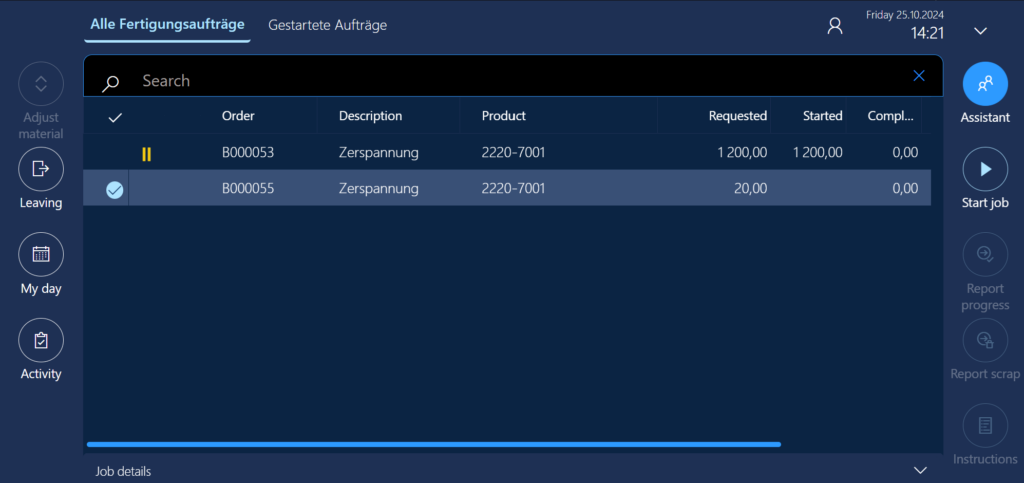
|
|
#1 |
|
Участник
|
erconsult: Assistance and Secondary operations in D365 for SCM to separate machining costs from labour
Источник: https://erconsult.eu/blog/assistance...s-from-labour/
==============  Assistance and Secondary operations in D365 for SCM to separate machining costs from labour
In Dynamics 365 Supply Chain Management (SCM), in its recent internal MES incarnation called “Production Floor Execution” (PFE), there is a notion of Bundle and Assistance. If workers handle several production orders at once it is called bundling. This setup shares labour costs across orders, lowering the cost per item: M orders : 1 worker. If multiple workers share one job, it is called assistance. A lead worker (Pilot) is assigned the production order job, and other workers join as assistants. The Pilot’s time is replicated into the Assistant’s time records, thus increasing the labour cost per item: N workers : 1 order. In a general case, the relation between the orders and workers may be M:N, if a Team of assistants and the pilot takes on a bundle of production orders. Now, the Assistance model help solve a controlling task: recording machine costs and labour costs separately. For example, setting a machine up consumes less energy than a full speed machine operation: during the setup operation, the labour cost prevails if we neglect the amortization. On a contrary, once a highly automated work cell is programmed and set up, the worker may leave and let the cell work on its own. The machine cost prevails. Consequently, instead of a blended rate of the machine hour, we may decide to split the hours into 2 different route categories: one for the machine, one for the worker, and even one for the energy consumption. Primary vs. Secondary operations In Dynamics 365, production steps are called operations. Some operations are “primary”, meaning they control the main task, usually involving a machine or workstation. Others are “secondary”, like additional labour or support roles, running alongside the primary task. These can help track labour costs separately and in real-time. Primary and secondary operations share the same operation number but have different Operation IDs in Dynamics 365. They both run at the same time, and the primary operation controls how long the job lasts. The key is, secondary operations allow for distinct cost recording for personnel assisting a machine operation. Setting up secondary operations for labour cost tracking
In the above scenario, the human machine operator may come and leave at will, his or her working time is independent from the machine schedule. Recording a separate energy contribution is a slightly different, simple scenario. Here we may use secondary operations, too. If we can attribute a certain volume of natural gas or electric energy to one hour of the machine’s operation or to a kilogram of the product / semi-finished product, then this overhead may be posted synchronously with every machine time/quantity route transaction. Create a special Route group for the secondary operation. Deactivate Job management, because the electricity meter is not going to actively post its working hours. Turn on the Run time (=constant consumption in kWh per machine hour) or Quantity (=constant consumption in kWh per machined piece) in the Automatic route consumption group. Do it in sync with the Estimation and costing sliders. Assign this cost group to the secondary operation on the route. This will be NRJ in the following example:  Production and Manufacturing blog series  Further reading: Integrate APS with Dynamics 365 for SCM D365 Mass de-reservation utility Picking list journal: Inventory dimension Location must be specified Consumable “Kanban” parts in D365 Warehouse management Subcontracting with Warehouse management Part 2 Subcontracting with Warehouse management Part 1 Semi-finished goods in an advanced warehouse The case of a missing flushing principle</p> The post Assistance and Secondary operations in D365 for SCM to separate machining costs from labour appeared first on ER-Consult. Источник: https://erconsult.eu/blog/assistance...s-from-labour/
__________________
Расскажите о новых и интересных блогах по Microsoft Dynamics, напишите личное сообщение администратору. |
|
|